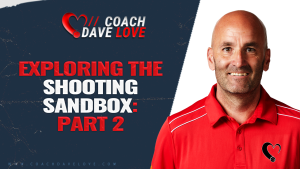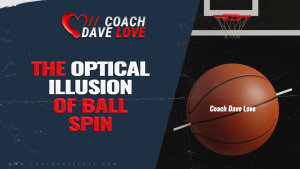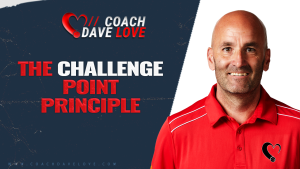Every once in a while when I’m on a long drive home from a clinic (and lonely!) I’ll reach out to high school coaches on twitter.
I’ll say something like “Send me your phone number and we can talk for 15min about whatever you want…”
And then I have a series of 15min phone calls with people from all over the world.
This really gives me a sense of some of the challenges that high school coaches face, and how they can tackle those challenges.
Now, every program is different, everyone faces different challenges, but I want to talk about some of the things I would do if I became a shooting coach for an imaginary High School program.
IDENTIFY RESOURCES
Most coaches I spoke to said the same thing. “We don’t have any resources”.
I understand it feels that way, and it’s probably very true, but you have the important ones. You have a gym for at least a couple of hours. You have some players. Hopefully you have some help coaching.
Those are the big ones…
Now, do you have a phone? An iPad? A projector? A laptop? Those are nice, but not necessary.
All I would NEED as a shooting coach would be a gym for 15min on a regular basic and players. Anything else is gravy.
DON’T WASTE YOUR MOST PRECIOUS RESOURCE
When I was the shooting coach for a University team in Canada, we had no budget. Great facilities, great players, no extras. Just basketballs, hoops and players.
The biggest thing I learned in my first year working with the team was not try to work with every player.
TIME was my most precious resource. I was volunteering with the team in my free time outside of my full-time job. I had about 4-6 hours a week to try to be as helpful and useful as possible.
What I discovered after the first season was I was spending too much time with too many players and not enough time with the ones that needed it the most.
In every group of 15 players there will be 3 players that don’t really need a shooting coach, they are already good shooters. Then there will be 5 that don’t really WANT to work with the shooting coach – for whatever reason they aren’t invested. Then there will be a few that circumstances get in the way – maybe now isn’t the right time. But there will be a small group of players (I think 3 is a good, manageable number) that NEED and WANT the help.
That is where I would spend most of my individual time. I would try to schedule Player A to come in before practice one day, and Player B to stay after practice. The next day I’d have Player C before, and Player A after. Then keep rotating them to make sure you got consistent individual time with the players that need it the most.
INDIVIDUAL TIME
Many coaches I spoke to on the phone said they didn’t have flexibility to get in the gym before or after practice. No problem! Time to get creative.
You can have the first 30min of practice be individual work. A small group might start with a dynamic warm up, another small group is working with one coach on an aspect of the game that needs attention, and the remainder are working individually with coaches, and you rotate the groups every 10min. Whatever the solution, there is probably a DECENT one out there.
You might have one practice a week that are just on individual skills. Players come in for at total of 45min and spend 15min each with 3 different coaches on 3 different skills. Get creative.
WITHIN TEAM PRACTICE
I was talking with an NBA player about a great shooting team he had played for and what he thought was a reason they were so successful (beyond just having a lot of great shooters on the team). His response was simple. “We shot a lot in practice. You could FEEL that shooting was valued because we did it a lot every day.”
Don’t TALK about the importance of shooting. SHOW it.
Allow players time to warm up their shot and hold them accountable to doing it EVERY day.
Have players shoot free throws after every drill. Finish a drill and everyone go to a hoop and shoot 2, and record the numbers.
Do situational shooting early in the practice to get reps. But also know WHAT YOU ARE WORKING ON in those situations. If, you aren’t sure, finishing on two feet at the end of a shot is always a safe point. Any spot shooting drill I do with a group, that is a requirement. FINISH ON TWO FEET.
Players need to FEEL a shooting culture, not just hear about it.
GIVE HOMEWORK
Make it clear to players, on an individual basis, what they should be working on AND HOW.
Players hate it when coaches tell them what to do but don’t tell them how to do it. So SUPPORT them in improving.
Help them create workouts that they can do on their own, and show them EXACTLY what they should be doing in each of those drills.
That is what I do in my ONLINE WORKOUT PROGRAMS. Players get the drills, but they also get the focus WITHIN the drills. The programs are laid out for specific habits, with progressive drills that ZERO in on the details holding a player back.
If you want more information on shooting development, make sure to subscribe to my FREE SHOOTING NEWSLETTER.



